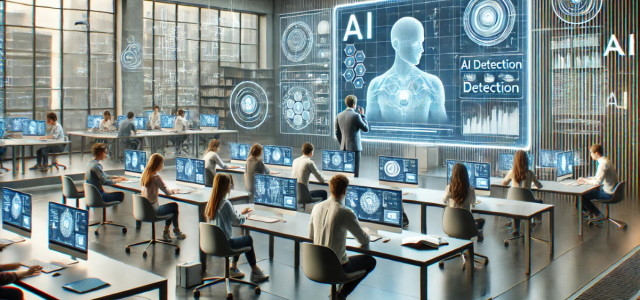AI Detectors Wrongly Accuse Students of Cheating, Sparking Controversy

As AI becomes a fixture in classrooms, concerns are growing over its unintended consequences. Many educators now rely on AI detectors to flag potential cheating in student assignments, but what happens when the technology gets it wrong?
For students falsely accused of using AI tools, the consequences can be severe, leading to damaged academic records and strained relationships with teachers, according to a report via Bloomberg.
When AI Detectors Get it Wrong
Take the case of Moira Olmsted, a student at Central Methodist University. In 2023, she found herself fighting to prove that she had written her own assignment after an AI detection tool flagged her work as likely AI-generated.
Despite her explanation that her writing style, shaped by autism spectrum disorder, may have been misinterpreted, she faced the risk of severe academic penalties. Olmsted’s situation highlights a growing issue in educational institutions.
AI detectors like Turnitin and GPTZero have become prevalent. A survey by the Center for Democracy & Technology found that about two-thirds of teachers use AI detection tools regularly. However, even a small error rate can impact a significant number of students.
For example, Businessweek tested leading AI detectors on 500 human-written essays and found that 1% to 2% were falsely flagged as AI-generated. With millions of student assignments submitted every year, the implications are vast.
False Accusations and Consequences
False accusations primarily impact students who write in a more straightforward or formulaic manner. These can include neurodivergent students, those for whom English is a second language, and those who simply prefer a more mechanical writing style.
A Stanford University study revealed that AI detectors are disproportionately inaccurate when reviewing the work of non-native English speakers, raising ethical concerns about fairness. Despite these challenges, AI detection tools continue to see widespread use.
Companies like Copyleaks and Turnitin emphasize the tools’ value as a starting point for conversations between teachers and students. As Copyleaks CEO Alon Yamin explains, “Nothing is 100% — our tools are intended to identify trends, not serve as final judgments.”
Student’s Response
However, many students have been forced to change their approach to writing in fear of false accusations. Some are even using “AI humanizers,”. These are tools that rewrite human-written work to avoid being flagged.
According to Businessweek, these tools can dramatically reduce the likelihood of being incorrectly accused, but they raise questions about the escalating technological arms race in the classroom.
AI’s Future in Education
While AI is poised to play an increasing role in education, the current reliance on AI detection tools is creating an atmosphere of mistrust. “Artificial intelligence is here to stay,” says Adam Lloyd, an English professor at the University of Maryland, “but treating it as a threat in the classroom does a disservice to both students and teachers.”
As the debate over AI in education continues, institutions are grappling with how to balance the benefits of technology with the risks of false accusations. For now, students like Moira Olmsted are left navigating a complex landscape where a single false flag can have significant consequences.
